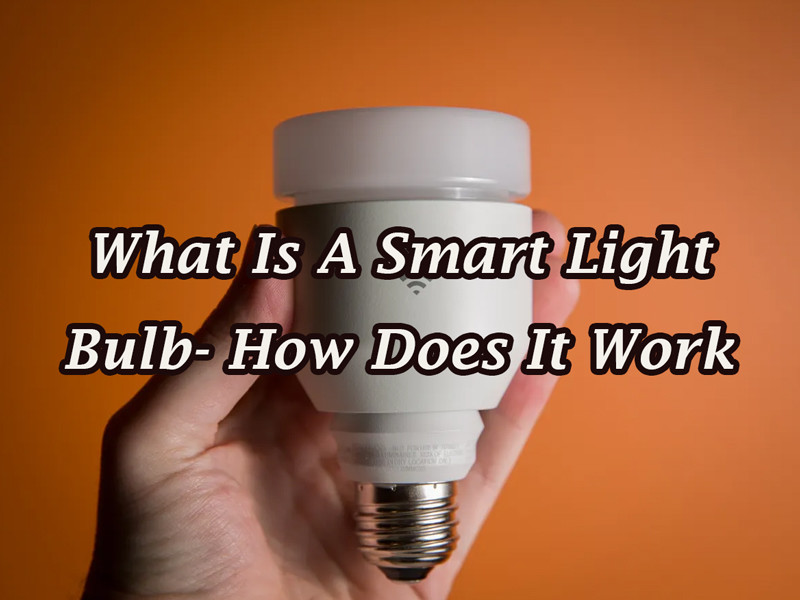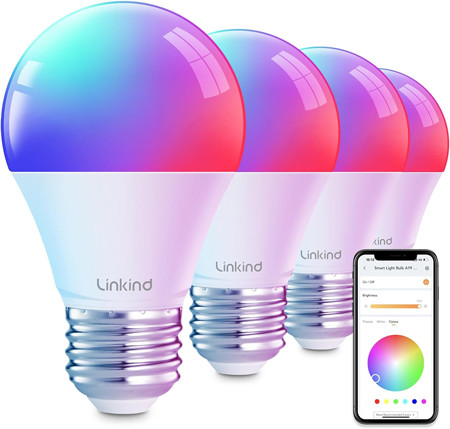
In the realm of modern technology, innovations are continually reshaping the way we interact with our surroundings. One such innovation that has garnered significant attention in recent years is the smart light. Often regarded as the cornerstone of smart home systems, these intelligent lighting solutions offer convenience, energy efficiency, and customization like never before. But what is a smart light, and how does it work?
Understanding Smart Lights: What Is A Smart Light Bulb
At its core, a smart light is a lighting fixture equipped with wireless connectivity and embedded intelligence, allowing it to be controlled remotely via a smartphone, tablet, or voice commands. Unlike traditional lighting systems that rely on manual switches or dimmers, smart lights offer a wide range of features and functionalities that enhance both user experience and energy management.
Components of a Smart Light:
- LED Technology: Most smart light bulbs utilize Light Emitting Diode (LED) technology, known for its energy efficiency and longevity. LEDs produce light by passing an electric current through a semiconductor, resulting in illumination without the heat loss associated with traditional incandescent bulbs.
- Wireless Connectivity: Smart lights are equipped with wireless communication protocols such as Wi-Fi, Bluetooth, or Zigbee, enabling them to connect to a central hub or directly to a smartphone or other smart devices.
- Sensors: Many smart lights incorporate sensors such as motion sensors, ambient light sensors, and occupancy sensors. These sensors enable the lights to respond to changes in the environment, adjusting brightness or turning on/off automatically based on detected motion or ambient light levels.
- Control Interface: Smart lights can be controlled through various interfaces, including dedicated smartphone apps, voice assistants such as Amazon Alexa or Google Assistant, and even manual switches or remote controls.
How Smart Lights Work:
- Setup and Configuration: The first step in using smart light bulbs is setting them up and configuring them to work with your preferred control method. This typically involves connecting the lights to a central hub or directly to your home Wi-Fi network and installing the accompanying mobile app.
- Remote Control: Once set up, smart lights can be controlled remotely from anywhere with an internet connection. Using the mobile app or voice commands, users can turn lights on or off, adjust brightness levels, and even change colors if the lights support RGB functionality.
- Automation: One of the key features of smart light bulbs is automation. Users can create schedules or routines to automate lighting based on their preferences or daily routines. For example, lights can be programmed to turn on gradually in the morning to simulate sunrise, or to turn off automatically when no motion is detected in a room for a certain period.
- Integration with Smart Home Ecosystems: Smart lights can be integrated into larger smart home ecosystems, allowing them to work seamlessly with other smart devices such as thermostats, security cameras, and door locks. This integration enables advanced automation scenarios, such as turning on lights when a motion sensor detects movement outside the house or dimming lights when a movie starts playing on your smart TV.
Benefits of Smart Lights:
- Convenience: Smart light bulbs offer unparalleled convenience, allowing users to control their lighting with a simple tap on their smartphone or a voice command to their virtual assistant. This eliminates the need to fumble for light switches or dimmers and provides greater flexibility in how lighting is managed.
- Energy Efficiency: By leveraging LED technology and automation features, smart lights can help reduce energy consumption and lower electricity bills. Users can schedule lights to turn off when not in use or dim them during daylight hours, maximizing energy savings without sacrificing comfort or convenience.
- Customization: Smart lights offer a high degree of customization, allowing users to adjust brightness levels, change colors, and create dynamic lighting effects to suit their mood or ambiance. Whether it’s setting the perfect lighting for a romantic dinner or creating a vibrant atmosphere for a party, smart light bulbs can adapt to any occasion.
- Security: Smart lights can enhance home security by simulating occupancy when homeowners are away. Lights can be programmed to turn on and off at random intervals, giving the impression that someone is home even when the house is empty. Additionally, motion-activated lights can deter intruders and provide added peace of mind.
Conclusion:
In conclusion, smart light bulbs represent a significant advancement in lighting technology, offering a host of features and benefits that go beyond traditional lighting solutions. By harnessing the power of wireless connectivity, sensors, and automation, smart light bulbs provide users with unprecedented control, convenience, and energy efficiency. As the demand for smart home solutions continues to grow, smart lights are poised to play a central role in shaping the future of lighting design and home automation.
 WOWOW Faucets
WOWOW Faucets




